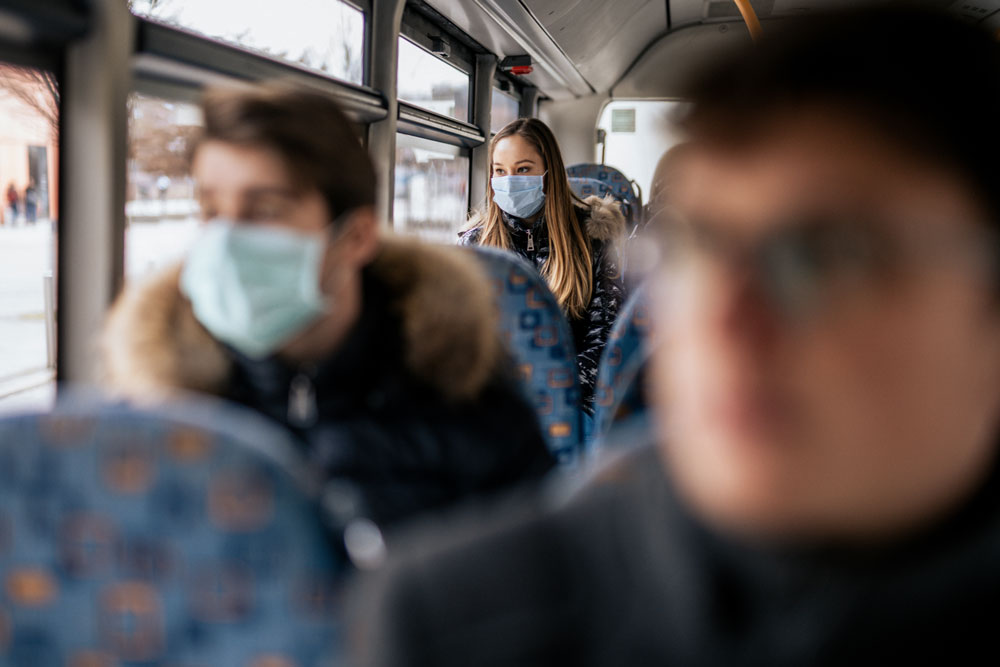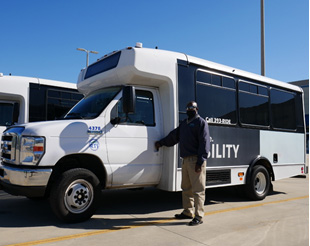
COIVD-19 continues to affect the lives of millions of people around the world with deleterious effects to the economy. Understanding where people are traveling to, and the decision-making process associated with travel, including the effects on transit and ridership, will be key to assisting agencies in assessing emergency responses and preparing for major public health calamities in the future.
At the UFTI, affiliated researchers such as Dr. Jing Du and Dr. Siva Srinivasan, both of the Department of Civil & Coastal Engineering at the Engineering School of Sustainable Infrastructure & Environment, are working on projects that evaluate the impacts of the pandemic on mobility and transit.
Dr. Du’s work on “High-Frequency Data Collection for Human Mobility Prediction during COVID-19,” funded by the National Science Foundation, focuses on gathering information on the factors motivating people to move from Point A to Point B during the pandemic. The study explores how they are making those decisions and how that movement (mobility) relates to social distancing, sheltering, and self-quarantining. So far, Dr. Du’s research team has produced a smart phone app, compatible with iOS and Android, to gather mobility data from participants in the study. The app also includes a set of questions.

“Every other day, the app pushes questions to the participants to survey their risk perception and their attitudes toward federal and local governments’ reactions,” he said. “The survey also includes a series of psychometric tests which measure anxiety level, sentiment, and more.”
The research team is in the process of analyzing data to find statistical relationships between psychological and sentimental trends and the mobility changes over the course of the pandemic. Dr. Du reports that in the past 3 months, more than 200 residents from the greater Boston area have participated in the study. (See images and figures from study.)
COVID-19 impacts on transit ridership was the focus of two studies undertaken by Dr. Srinivasan and his research team. In one study, the research team analyzed ridership data from five transit agencies in Florida (Jacksonville, Gainesville, Manatee, Lee, and Palm Beach). The team also assembled GIS-based parcel-level data to determine land-use along the routes. Combining the ridership and land-use data, they looked at 1) how COVID-19 impacted ridership on bus routes based on the land uses served by the routes and 2) the policy actions by the associated transit agency (i.e. reduced capacity of buses and fare cancellations).

“The models showed that reduction in bus capacities to facilitate social-distancing did statistically reduce the ridership, while the fare-suspension policies had a statistically significant positive impact on ridership,” Dr. Srinivasan said. “Routes serving a greater mix of land uses also had a lower reduction in ridership.”
The second study is a collaborative effort with Dr. Ruth Steiner of the UF Department of Urban & Regional Planning. The project, “Evaluation of East Gainesville’s Microtransit Mobility,” is funded by the Florida Department of Transportation. This project seeks to understand ridership patterns on an on-demand, flexible-route shuttle system (the microtransit service) operated by Gainesville’s Regional Transit System in East Gainesville.
“The study was funded prior to the pandemic and hence the goals are to understand the ridership trends in general,” Dr. Srinivasan said.

The analysis of ridership data across 2020 showed a significant reduction in March and April followed by a steady rebound since. The study team is currently deploying a survey to further understand the behavior of users and non-users of the microtransit service.
“Transit agencies have been hit hard by the pandemic and analyzing ridership trends using models can help agencies develop recovery plans while prioritizing serving the captive riders,” Dr. Srinivasan said.